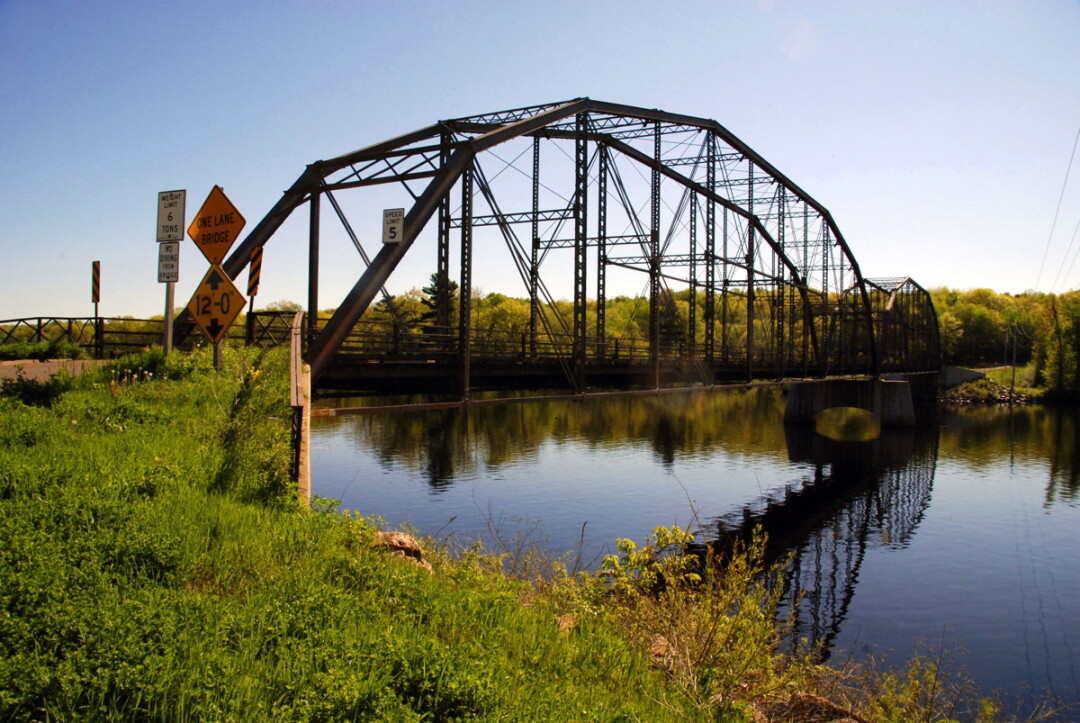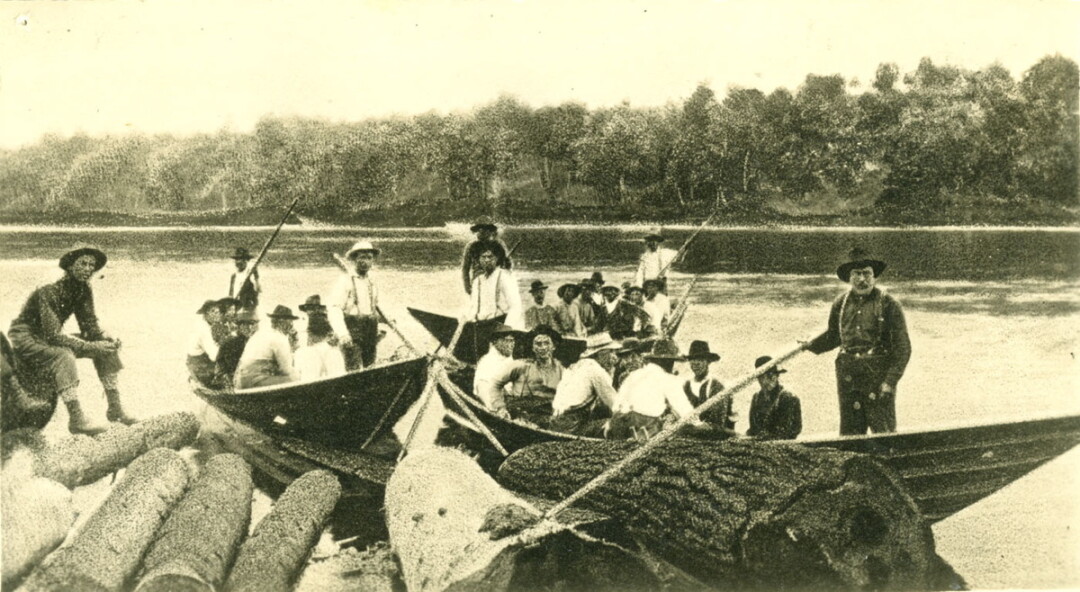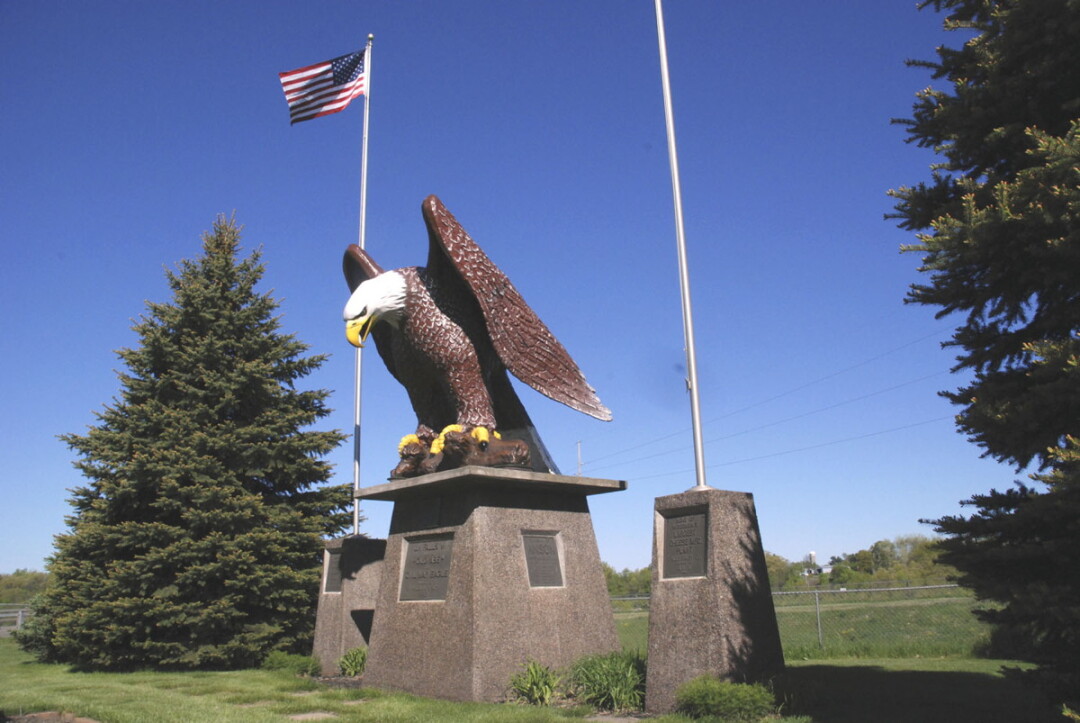Lumbering Along: Historic driving tours get a 21st century reboot

Timber Trails, a series of four driving tours of the Chippewa Valley that emphasize the region’s rich lumbering history, has been rewritten, recalibrated, and rerecorded just in time for the summer vacation season. Two of the tours – one for Eau Claire County, one for Chippewa County – were recently launched online, where they can be streamed free on your smartphone; two more, featuring the Menomonie and Knapp areas, will be available in the near future.
“In the fall, I can only imagine how awesome the drive is.” – Kenzi Phillips, Visit Eau Claire marketing director
“More and more, people are looking for engaging and immersive experiences rather than passively watching things being presented to them,” said Linda John, executive director of Visit Eau Claire. “This tool is a great way to engage people in the experience of learning about and enjoying our area. Ideally, it will be done with families and groups of people so the tools we provide with this technology will help people to create new memories of time together as well.”
The Timber Trails program was first launched in 1998 to coincide with a burst of interest in Wisconsin history that accompanied the state’s sesquicentennial. The original project was spearheaded by then-museum director Susan McLeod and narrator Eric Wheeler. However, nearly two decades have gone by, and the passage of time – coupled with new roads and new technology – have pushed the original Timber Trails toward obsolescence. (For one thing, not many vehicles even have cassette players anymore.) With the help of grants from the federal Institute of Museum and Library Services and the state Department of Tourism, the museum and Visit Eau Claire – the region’s tourism agency – worked together to reboot Timber Trails for the 21st century.
On a recent sunny spring morning, I traveled the Chippewa County segment of the Timber Trails as a kind of beta tester. With Visit Eau Claire marketing director Kenzi Phillips at the wheel and Chippewa Valley Museum editor John Vanek in the back seat, I rode shotgun and served as navigator on the Chippewa County Timber Trail. With the help of Phillips’ smartphone, which was plugged into the car stereo, I loaded the appropriate website, tapped on the play icon, and navigated us to the tour’s starting point on Bridge Street in downtown Chippewa Falls. The voice of Lois Hodgins – who narrated the tour with her husband, Don – filled the car.
“Pack some snacks, buckle your seat belts, and start your engine. It’s time to follow the Timber Trails through beautiful Chippewa County,” Lois said before she and Don launched into a two-minute primer on the history of Chippewa Falls from the mid- to late-19th century lumber boom to the present. The couple peppered the facts and directions with witty ad-libs. (You’ll likely recognize their names and voices from their long association with the sadly defunct Fanny Hill Dinner Theatre.)

The Timber Trails tours cover a lot of ground, literally and figuratively. This particular tour – which hits 10 sites of “historic, scenic, and cultural significance,” plus some optional side jaunts – covers about 65 miles and takes 2 to 4 hours to complete. (Set aside half a day so you don’t feel too rushed.) The narration covers the period from the last ice age (10,000 years ago) through the present day, encompassing the Native American era, European settlement, the 50-year lumber boom (during which 46 billion board feet of white pine were felled), and the post-lumber era adaptation to agriculture and industry.
Vanek did most of the rewriting of the tour script as well as the rerouting of the tour itself: Since 1998, some of the region’s roads have change, and some of the sights along the tour no longer exist, while other ones have been added.
From Chippewa Falls we headed north out of town, glimpsing what remains of the long-lost lumber town of Chippewa City along O’Neil Creek. Then we moved on to the Old Abe Monument in Jim Falls, one of several sites related to the famed bald eagle who accompanied the 8th Wisconsin Volunteers in the Civil War. From there, the trail continues to follow the river along Highway 178, stopping at the Cobban Bridge, the towering log stacker in Cornell, and the small community of Holcombe, where you’ll see an enormous hand-carved statue of a Native American and learn about a deadly turn-of-the century logjam.
“In the fall, I can only imagine how awesome the drive is,” Phillips said as we traveled through the tree-covered hills.
After Holcombe, the trail becomes even more rural and scenic as it curves west and then south. The countryside alone is worth the trip, and it includes the sights along County Highway E, the only officially designated “Rustic Road” in Chippewa County, which winds its way through glacial moraine territory. The road follows the old Flambeau Trail, which 19th century settlers used to make their way north.

In addition to stories about culture and history, the tour touches on the geography and geology of the region, explaining how the last ice age contributed to the landscape, carving hills and leaving stones and sand. Along the way, there are historic markers to read, spots for picnics, side trips to wildflower areas and the Ice Age Trail, mom-and-pop restaurants, and small museums.
As the trail loops back down Highway 124, it stops in the Town of Eagle Point (and an unexpected Old Abe statue!) and at the nation’s first cooperative power generating station (built by the Wisconsin Power Co-op in the 1930s) before returning to Chippewa Falls for suggested stops at the Leinenkugel Brewing Co. and Irvine Park.
I ended the morning with some good photos, some great memories, and a renewed appreciation for the Chippewa Valley’s history. And that’s the point, said John, Visit Eau Claire’s executive director: “We hope that by driving the routes and following along with the narrative they will come to better understand the stories of our area, and the unique people and places that have all been a part of creating this place we call home.”
Once all four tours are available to be streamed online, the project partners hope to make them downloadable as well. (Currently, you’ll only be able to follow the tour if you have a mobile device with a consistent Internet connection.) In addition to the right technology, you’ll need a friend along to safely travel the Timber Trails, with one person driving and the other serving as navigator and button-pusher. (Keep your eyes on the road, history buffs!)
To learn more about Timber Trails or to follow along, visit www.visiteauclaire.com/audio-tours.


















